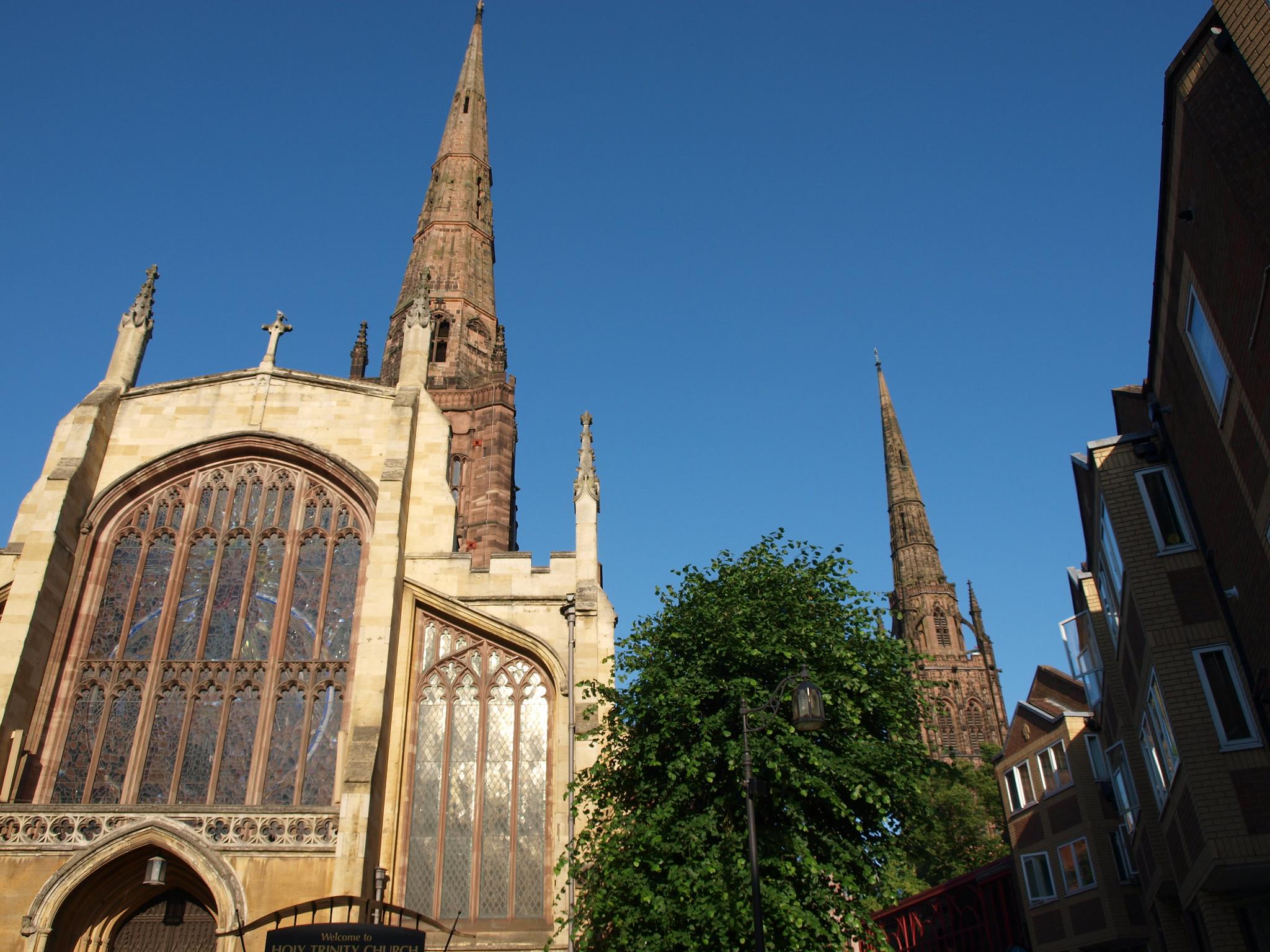San Steffan
Hen Faesyfed, Powys
Er iddi gael ei llosgi yn ystod Gwrthryfel Glyndŵr yn 1401, mae gan Eglwys Sant Steffan hanes cystal ag unrhyw gastell, gyda chroglen ganoloesol brin ac organ a all fod yr hynaf yn y DU.

Holy Trinity is a beautiful medieval church in the centre of Coventry and contains one of the finest examples of a 'Doom Painting' in Europe.
Coventry, West Midlands
The existence of Holy Trinity was first recorded in 1113. At that time, the Hill Top area was dominated by the great Benedictine Priory which was founded by Leofric and Godiva. Holy Trinity was built for the tenants of the Priory lands which extended over the north of Coventry.
Little is known of the early years of the church except that it was confirmed to the Priory by Bishop Roger de Clinton in 1139 and listed among the Priory’s dependent Chapels in 1183. Situated in Coventry City Centre, it is one of the largest medieval churches in England. With a spire of 72 metres (237 feet) and length of 59 metres (194 feet) it is a major landmark of cathedral proportions .
The exterior of the church is conventional Perpendicular, mostly of red sandstone refaced by the Victorians. Parts of the sandstone are still scorched pink from the 2nd World War Blitz firestorm.
The interior is also heavily restored, but not so as to destroy the grand proportions and cruciform plan. The tower crossing interrupts a high, four bay nave with a south aisle, two north aisles and a superb panelled roof. This leads the eye towards a chancel that is even longer than that of the nave, giving the interior space an exhilarating visual drama. Like the nave, it has three aisles, most splendid of which is the northernmost containing the Marler Chapel. The crossing and tower were built between 1380 and 1420. The lantern stage was opened during the 1854-56 restoration when the ringing floor and stones were removed.
There appear to have been at least eight altars in addition to the high altar, each one with its own chapel and chantry. From Holy Trinity’s medieval heyday in the fifteenth century date the pulpit, the lectern and the wall painting of the Last Judgement which is considered one of the finest examples of its type in Europe. In 1854, Gilbert Scott, extensively renovated and remodelled the church interior, galleries were removed and the current Victorian pews installed.
Hen Faesyfed, Powys
Er iddi gael ei llosgi yn ystod Gwrthryfel Glyndŵr yn 1401, mae gan Eglwys Sant Steffan hanes cystal ag unrhyw gastell, gyda chroglen ganoloesol brin ac organ a all fod yr hynaf yn y DU.
Capel y Ffin, Powys
Lleolir eglwys Sant Mair, Capel y Ffin yn nyffryn cudd yr afon Honddu, gyda’r Mynyddoedd Du i’r gorllewin iddi a Chlawdd Offa i’r dwyrain. Mae’n fan lle mae celfyddyd a thirwedd yn ymdoddi i’w gilydd – ac nid yw’n syndod felly iddi ddenu arlunwyr a beirdd am ganrifoedd.
Petrisw, Powys
Cyrhaeddir yr eglwys hon trwy deithio naill ai ar hyd lonydd troellog sy’n gyforiog o flodau, neu ar hyd llwybr troed. Wrth gyrraedd, fe welwch yr eglwys ganoloesol hon yn sefyll ar lethrau’r Grwyne Fawr, yn edrych heibio cwm bychan at lethrau Mynydd Pen-y-Fâl yr ochr draw.